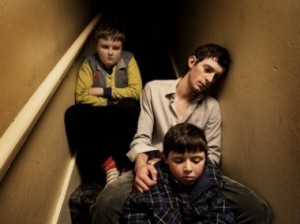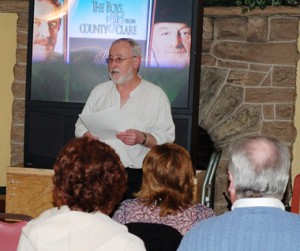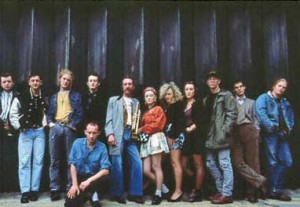The 19th Philadelphia Film Festival is officially under way. The 10-day movie extravaganza, which features two superb Irish films, kicked off Thursday night with the screening of “The Black Swan.” (The festival runs from October 14 to 24.) Not set to be officially released until next December, the film starring Natalie Portman is already garnering the kind of buzz that foreshadows major awards.
That’s exactly the kind of excitement that the Philadelphia Film Society (PFS) is proud to generate.
“This year is the best line-up we’ve ever had. Of course, I said that last year,” laughed PFS Executive Director J. Andrew Greenblatt. “You want to top yourself every year, not in size, but in terms of quality.”
As of Wednesday, there were 112 films on the schedule.
“When we put together the first program guide, we had 107, but we’ve been continuing to add them. There are so many great films that we couldn’t stop; we couldn’t say no. And we never say ‘never’; there’s a chance 1 or 2 more could come in.”
A good portion of those 112 films don’t have distribution deals yet, Greenblatt said. “You many never see them anywhere again.”
Among the feast of films on offer this year are two acclaimed Irish films that have already played at other festivals, where the buzz on them began building.
The first of these is “My Brothers,“ by first-time director Paul Fraser. Filmed in Kerry, it’s a coming-of-age story (think, “Stand By Me”) that’s set over Halloween weekend in 1987. Oldest brother Noel takes his dying father’s treasured watch (a cheap digital one that was won at an arcade in Ballybunion) and when it breaks during a fight (along with his wrist), Noel decides he has to replace it. Unable to drive the bread van he “borrowed” without permission because of his injured wrist, Noel enlists his two younger brothers, 11-year-old Paudie and 7-year-old Scwally, to travel with him to Ballybunion to share in the driving. By turns both comic and heart-wrenching, the film follows the three brothers as they experience a journey that changes them forever.
“The Brothers” is showing on Sunday, October 17, at 1 p.m. at The Bryn Mawr Film Institute, and then again on Saturday, October 23, at 12 noon at The Ritz Five E.
The second movie, “Outcast,” directed by Colm McCarthy, is quite a bit different. Greenblatt described it as “a lot darker, and a little twisted. It takes you into a subculture that hasn’t been explored on film before. I recommend it for anyone with ‘a tolerance.’ It’s pretty gripping.”
The subculture that Greenblatt is referring to is the world of the sidhe (pronounced shee). Tied to the fairy folklore of Ireland, the sidhe are a people of the mounds, able to shift shapes and in possession of great and dark power.
The Scottish director was raised on his Cork-born father’s dark tales of Celtic myth and legend, and based his film around the idea of how those stories would play out in the gloomy urban setting of Edinburgh and its castle estates.
On the run from a disturbing beast-like pursuer (James Nesbitt), mother Mary (Kate Dickie) and teen-age son Feargal (Niall Bruton) are Irish travelers caught up in their own world of dark ritual. Fergeal is also involved in a palpably ill-fated romance with Petronella (Hanna Stanbridge), a girl of Scottish-Romany descent.
The movie’s trailer, which can be viewed here, http://www.youtube.com/watch?v=M9Jx1Xj5sgk&translated=1, gives a glimpse into the atmospheric darkness of “Outcast.”
“Outcast” is showing on Saturday, October 16 at 10:15 p.m. at The Ritz Five E, and again on Saturday, October 23, at 5:30 p.m. at The Ritz Five D.
“The Irish film industry is producing so many original movies these days. Just from what I’ve seen, things look good. There seems to be a big upswing. People should come out and see these films. If they like edgy, “Outcast” is for them. If they want something lighter, that’s still intriguing, captivating and fun, then they have to see “Two Brothers.”
For more information on the Philadelphia Film Festival, including a full list of the movies showing and their schedules, go to: http://www.filmadelphia.org/



